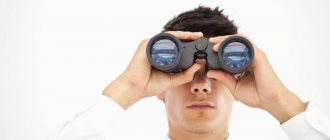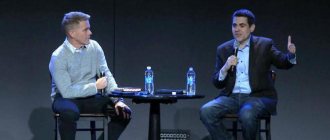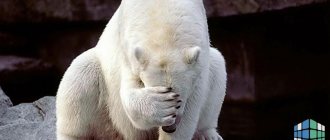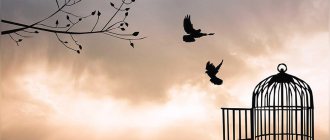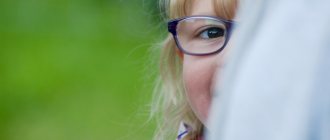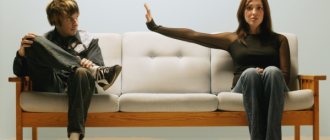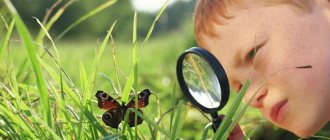Forms of observation
Observation is a method of collecting primary information by passively recording certain processes, human actions, events that can be detected by the senses (that is, the method is based on visual and auditory perception of phenomena).
Ordinary observation is an involuntary human activity associated with obtaining information about the world, a way of understanding the world (for philosophers, observation is the first stage of the cognitive process: from perception and observation to description, assumption, its justification and verification).
Scientific observation differs from ordinary observation in its focus (the intention to obtain certain information for given research purposes), systematicity, planning and the presence of control procedures. However, the term “observation” is not yet clearly defined. In some social sciences (sociology, statistics, demography), observation refers to any field research procedure (including survey), that is, any procedure that does not involve obtaining data from secondary sources.
Depending on the nature of the environment.
Field observation is carried out in natural conditions, in a real situation.
Laboratory observation - it is carried out in artificially created conditions and allows you to maintain the stability of the environment in which the research takes place.
Laboratory-field observation - carried out in natural conditions, but with certain restrictions that eliminate the shortcomings of both laboratory and field observation.
The researcher’s place in the process being studied (polar forms are indicated, but in practice transitional options can be used).
Observations with the direct participation of the researcher (participant observation) - the observer himself participates in the situation, he simultaneously influences the situation and, in turn, is subject to its influence. This form allows you to correct the objectivity of the observer’s conclusions due to a better understanding of the observed processes.
Observation is carried out by an observer from the outside, without participation in the observed process (non-involved observation) - the observer is located at some distance from the observed object, which allows him to see the entire process and control the external factors influencing it.
According to the nature of perception of the object of observation.
Personal observation - observed events are recorded directly by the observer.
According to the degree of standardization of observation.
Non-personal observation - observed events are recorded using devices that reduce the subjectivity of the perception of events. Structured (controlled) observation - in this case, observation sheets are used with a clearly defined structure of recorded elements (aspects) of a process or situation, other elements of behavior are ignored.
Free (unstructured) observation - all elements of behavior are observed without a predetermined pattern.
Overt surveillance—observers know that surveillance is taking place and researchers warn them in advance.
Covert observation - those being observed do not know about the research being conducted.
According to the regularity of observation.
Systematic observation is carried out regularly and allows you to identify trends in processes.
Episodic observation does not have strictly defined rules for recording events.
Observation in one case - observation is carried out once in accordance with established goals, this observation scheme is not used again.
Random observation - observation of an unplanned phenomenon is usually not planned as a separate method of collecting primary data. Meanwhile, this often becomes a one-time reason for revising the marketing decisions of an enterprise.
Code of Ethics
For the proper use and characterization of the observation method, one must follow the basic rules of psychology as established by the Code of Ethics of the American Psychological Association. The researcher must adhere to precautionary measures.
If the trial is carried out in a public place, it is not necessary to obtain the consent of the participants. And for individual research, you need to obtain the subject's permission . Psychologists must behave carefully and try not to harm others. If this cannot be avoided, it is recommended to reduce the damage.
Intrusion into the privacy of participants should also be kept to a minimum. But when observing the behavior of family members, you need to obtain their consent and explain the purpose of the task. If a person engages in self-observation, then he can study any area of his life. All data about the subjects remains confidential, psychologists have no right to disclose them. Only the results obtained can be published without indicating names, addresses and other personal information.
Observation stages:
- object selection;
- data registration;
- creating a plan;
- selection of information processing method;
- carrying out the procedure itself;
- interpretation of data.
At the first stage, the psychologist selects the object and subject, the time and place of observation. He then selects the most appropriate research method and records all the data. After planning and choosing processing methods, he proceeds directly to the observation itself. The results obtained are interpreted to produce a report.
Observation method: features and characteristic disadvantages
The advantages of observation as a marketing research method compared to a survey are the following:
- Independence from the object’s readiness to cooperate, from the ability of the subject to verbally express the essence of the matter;
- Ability to provide greater objectivity;
- Ability to perceive unconscious behavior (choosing goods on store shelves)
- Ability to take into account the surrounding environment, especially when observing with instruments.
However, observation also has disadvantages:
- It is difficult to ensure representativeness;
- Subjectivity of the observer's perception;
- The behavior of objects may deviate from natural behavior during open observation (observation effect).
As a rule, observation is never the only method in the research process. To get the most objective and reliable picture, it is used together with other known methods. If observation performs a control function and is used to verify data already obtained during the study, its structure should be as clear and strict as possible. In this case, the observation conditions should be the same as those used to collect the information to be monitored.
Like other methods, observation is not perfect. It has a number of disadvantages. Observation results always raise the question: how representative are the data obtained? This is due to the fact that in most cases direct observation is carried out within a rather limited quantitative group, which calls into question the representativeness of the results. In addition, we should not forget that human perception is limited. This means that the researcher tends to let his guard down and miss important aspects and nuances of the situation under consideration. Practice shows that in most cases, researchers fail to develop knowledge about the motives, attitudes and interests underlying a particular behavior model. However, in some cases this serious limitation can be overcome.
It should also be remembered that the presence of an observer can have a direct impact on the situation being studied and influence the results. Anyone who conducts such an observation must understand that this is a complex method and an extremely labor-intensive process. Even more labor-intensive can be documenting the results of the observation, which sometimes takes longer than the observation itself.
The key to the success of any research is the optimal combination of quantitative and qualitative methods. To obtain the best results, the researcher must remember to maintain a reasonable balance. The main thing is not to be too ambitious and not to extract all possible and unimaginable information from unrepresentative observations and to avoid unnecessary use of quantitative characteristics. These are the two most common shortcomings of modern researchers.
The nature of the environment also plays an important role. Observation carried out in a natural setting (for example, in a shopping mall. If the situation is created artificially, then the observation is considered “laboratory”. The results of both studies are recorded using modern technical equipment or recorded in a notebook at the discretion of the researcher.
All difficulties associated with the use of the observation method are divided into objective and subjective. Objective ones do not depend on the observer. Subjective problems include those related to the personality of the observer. Among the objective difficulties, experts highlight the direct dependence of the possible observation time on the time of the observed situation. Facts of interest and importance are not always in the observer's field of vision. In addition, the personality of the observer himself, his presence at the place of observation and his possible reaction to what is happening can influence the behavior of the group and change the standards of behavior of the observed.
Definition of the concept
In social, clinical and educational psychology, observation as a research method has been used since the end of the 19th century, and in the last century it began to be used in labor science. This is the most ancient method of understanding surrounding objects and phenomena. In everyday life, a person himself does not notice how he begins to observe someone or something.
Observation cannot be called a process in which the intervention of the experimenter changes the conditions of its implementation. But it will help in cases where it is necessary to obtain a holistic picture of ongoing events and reflect it in records and tables. Main features of the procedure:
- connection between observer and subject;
- partiality - emotional component;
- difficulty and sometimes impossibility of repeating.
If the observation is carried out in natural conditions, then the person will not influence it in any way. But when the subject knows that he is being examined, he changes his habits.
The first experimenters were V. Prier, V. Stern and A. Gvozdikov. They observed the development of the child in the family and recorded the information received in their diaries.
Conditions required for observation
A short period of time so that changes in the environment do not affect the behavior or phenomenon being studied
It is also necessary to record the most characteristic features of the conditions and situations in which the observation occurs.
Observable events must be observable in nature and occur publicly (open behavior). For example, in a store, on the street, in an office.
Observation can be used to study not only the behavior of customers in a store or employees providing services to consumers, but also other processes. For example, how people use certain products (do their hair, cook breakfast, mow the lawn, etc.). The results can be used to create new product modifications, improve service, distribution and advertising (new themes for advertising campaigns).
Observation is a fairly flexible method of collecting information because it can be carried out by researchers in various forms. To group different methods of observation, the following classification criteria can be used:
- Nature of the environment;
- The researcher’s place in the process under study;
- the way in which an object is perceived by the observer; And
- Degree of standardization of observation;
- degree of openness of the observation process;
- The nature of the observed events;
- Regularity of observation.
The need to control the external conditions of observation determines the form of observation depending on the nature of the environment. Observation in the laboratory allows researchers complete control over the research environment and also provides greater flexibility in the use of specialized equipment. By creating the most favorable conditions for observation, researchers reduce the time and cost of observation. However, inviting subjects into a specific observation room and presenting them with a new environment may influence their natural behavior, thereby distorting the information and reducing its objectivity. For example, they spend much more time choosing brands of products than in a natural situation. Or, conversely, those who consider it “indecent” to study product samples, or those who do not want to seem too meticulous and intrusive when consulting with sellers, shorten the process of choosing a brand. Therefore, it may be more appropriate to conduct the study in the field; the advantage in this case is the naturalness of the observed behavior. Unfortunately, field observations have a serious drawback - research participants can be influenced by various external factors, including those that are random in nature and not directly related to the process being studied. For example, a sales floor may be out of stock at a certain time when consumer behavior is being studied. High traffic levels in a store during busy times can prevent shoppers from exploring a full range of products or checking out the packaging of a new brand; shoppers who can't stand crowds will likely limit their selection to the most familiar options. In the real world, it is also possible that the store (café or other establishment where the study is being conducted) may not have any intended customers for some time. To balance the disadvantages of field and laboratory forms, you can use a combined option - laboratory and field observation. In this case, the study is carried out in natural conditions, and a number of measures are taken to maintain their stability over time. When conducting laboratory and field observations, researchers must enlist the support of the administration of the organization where the observation is planned, for example, ensuring the availability of the required number of goods on the sales floor or otherwise ensuring the stability of the observation conditions.
